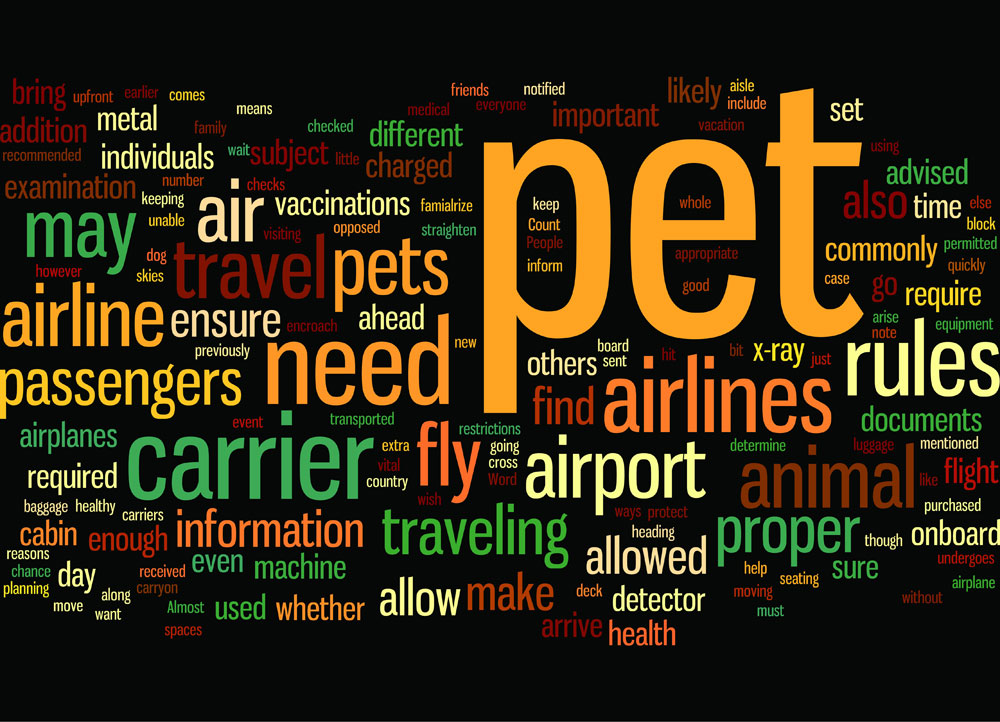Checklists… some loathe them, some absolutely love them and some simply cannot live without them. But the fact is that they really come in handy when you are in a hurry or have a lot on your mind. As restrictive as they may make you feel when preparing for your flight, they do nothing more than make your life easier because they’ll spare you from losing a lot of time and nerves and the airport. Besides, the majority of the carriers use such checklists to make sure that your Fido is fit to fly.
Travel arrangements
Make sure you made an appointment in order to vaccinate your pet and register all the vaccination details on its identity documents. In addition, if your pet has not yet been microchipped, take this into consideration as well. You won’t be able to go past the check-in if the animal is not fitted with a 15 digit non-encrypted microchip with functions at 134.2 kHz.
Get in touch with the local embassy of your destination country to get exact details. Keep in mind that several countries have strict quarantine regulations which you need to comply with.
Get your pet accustomed to its new environment. Allow it time to become familiar with the kennel a few weeks or even months (you know best) before you plan to leave. If you haven’t bought one yet, consider purchasing well in advance and train your pet so that it gets used to being locked in it. Keep in mind that any animal will be stressed if taken out of its natural surroundings. If, on the other hand, they are familiar to the kennel they are transported in, they will act completely normal. We are reminding you all these because, sometimes, even the most conscientious pet owners, ignore this responsibility. Your Fido should be allowed at least five days to get used to its crate before the journey.
Place a tag to the outer surface of the crate stating your PET’S NAME as well as FEEDING INSTRUCTIONS, if necessary. And if we decided to talk about food, let us inform you that almost all, if not all the airline companies will inform you that you should not allow your pet to drink or eat for 4 hours before departure. So it is wise to lessen the amount of food the day before they flight but hydrate the pet well. In case you’re travelling with a dog, take your Fido for a walk before leaving for the airport and, if you have enough time, for a second time previous to checking-in. LIGHT MEALS are not only required by law in the majority of the countries, but they also help the pets calm down.
In so far as sedation and use of tranquilizers on pets are concerned, the general belief is that you’d better AVOID this procedure. It will be more difficult for your pet to get accustomed to its new environment. In addition to this, its temperature may plummet during the flight. Furthermore, IATA has long advised airline passengers not to use sedatives and tranquilizers in animals are transported as cargo or as cabin luggage because of the latent unpleasant effects during transportation. This point of view is also approved by most of the veterinary organizations such as the American Veterinary Medical Association.
Must Haves
Prepare your pet’s passport and any necessary health certificates. In addition, make sure that you also have them in English. Make copies of all the documents and attach them to the crate. Do not forget the original copies at home because you’ll need them when you check in. The crate must also have a label with the traveller’s name, address, and phone number. Moreover, remember to place a tag with the pet’s name on one side of the crate. The kennel ought to have at least one ‘Live Animal’ sticker and probably two ‘Arrow Up’ stickers attached to the exterior. The carrier will supply these if necessary.
Kennel
The pet must be able to stand without touching the ceiling of the crate. It also needs to be able to move freely around the kennel and rest quite comfortably. Almost all the airlines recommend a crate that is made of rigid plastic and has a built-in metal door. Put two empty bowls inside the crate but fasten them well as well as a blanket, or any other absorbent material on the floor of the crate. Straw is prohibited. Secure the lock of the kennel and tape or remove the wheels.
Age/ number/ physical condition
The general rule is that your pet needs to be at least 10 weeks old. Pets will also travel separately. The only exception is applied to the cases when you need to transport puppies or kittens that are younger than 4 months. They may travel in the same crate as their mother as they not only depend on their mother, but they will also go through the journey less stressed. Last, but not least, do not even consider travelling with a pet that is injured or somewhat distressed. You pet needs to be in best of shapes.
All in all, let’s just say that it’s difficult enough to get you and your children ready for a flight, not to mention remembering what to take for your companion. However, if you consider all of the above, you’ll certainly have a GREAT FLIGHT.

 En
En Es
Es Fr
Fr